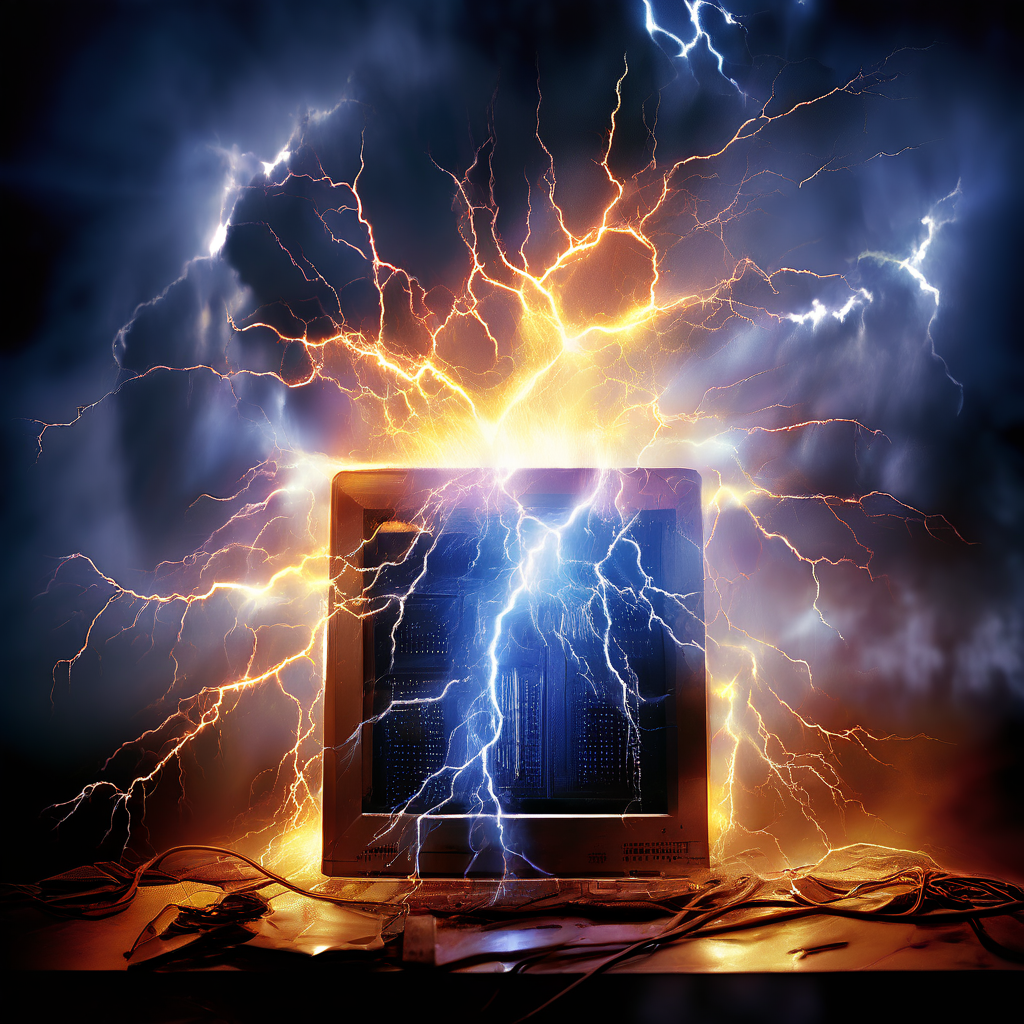Table of Contents
Introduction
In an era where microelectronics are ubiquitous, the need for robust lightning and surge protection has never been more critical. This article outlines the essential reasons for implementing such protection measures and their impact on human safety, property, and the integrity of electrical systems.

1. Human Safety Protecting against direct lightning strikes is paramount, as they pose a fatal risk to humans. Effective lightning and surge protection systems mitigate this risk, ensuring personal safety.
2. Property Protection Buildings and structures are vulnerable to the intense heat and mechanical forces of lightning. Adequate protection prevents or lessens property damage, preserving assets.
3. Equipment Integrity Sensitive electrical and electronic devices can suffer from surges caused by lightning. Protecting these devices from voltage spikes prevents costly repairs or replacements.
4. Data Security The vulnerability of computers and data storage systems to surges can lead to significant data loss if not safeguarded by proper lightning and surge protection.
5. Operational Continuity For businesses and critical infrastructure, maintaining uninterrupted operations is essential. Protection against lightning and surges prevents downtime and associated losses.
6. Compliance with Standards Adhering to industry standards and regulations for lightning and surge protection ensures safety, reliability, and often compliance with legal requirements.
7. Prevention of Fire Lightning-induced fires can be prevented by limiting voltage surges through the use of surge protection devices, which are crucial in fire prevention strategies.
8. Reduction of Electromagnetic Interference (EMI) Lightning and surges can cause EMI, disrupting wireless communications and electronic systems. Protection measures minimize this interference, ensuring smooth operations.
9. Protection of Power Grid The stability of the electrical grid is vital for societal functioning. Protection against lightning-induced surges prevents widespread outages.
10. Insurance and Financial Considerations Insurance policies often require lightning and surge protection, and these measures can lead to reduced premiums or coverage for related damages.
Based on the above considerations, we need lightning and surge protection——the surge protective device.
Why are lightning protection products called surge protective device?
Lightning protection products are called surge protectors because their main function is to protect electronic equipment and power systems from surge voltages, which are often caused by natural phenomena such as lightning strikes.
Specific explanation is as follows:
Surge : A surge is a sudden and large increase in voltage or current over a very short period of time. This transient overvoltage may cause serious damage to electrical equipment. Surge voltages can be caused by a variety of reasons, including lightning strikes (one of the most common causes), grid faults, motor startups and stops, and switching operations of large equipment.
protective device: A protective device is used to prevent electrical equipment from being damaged by surge voltage. By limiting the surge voltage, the protector protects the connected equipment from damage.
Although “lightning protection” is an important function of a surge protector, it is not only used for lightning protection. Surge protectors have a broader role, not only protecting equipment from surges caused by lightning strikes, but also from overvoltages caused by faults or operations within the power system.
Therefore, the name “surge protective device” is used to more fully reflect the function of this equipment, i.e., not only for lightning surge voltages, but also for other types of transient overvoltages. The name emphasizes the equipment’s ability to protect electronic equipment and electrical systems from all types of surge voltages. Different looking of surge protective device.
Famous lightning events in history
Benjamin Franklin’s Kite Experiment in 1752: Franklin proved through kite experiments that lightning is an electrical phenomenon, not a “sky fire”. This discovery laid the foundation for the later design of lightning rods.
- The 1885 Brooklyn Bridge Incident: The Brooklyn Bridge suffered a severe lightning strike shortly after completion, resulting in the death of one worker. This incident highlights the need for effective lightning protection measures for large structures.
- The 1902 St. Petersburg lightning strike: The St. Isaac’s Cathedral in St. Petersburg, Russia suffered severe damage in a lightning strike, including its massive dome. This incident emphasizes the need for a comprehensive lightning protection system for buildings.
- The 1963 US aircraft accident: A commercial aircraft was struck by lightning during flight, causing damage and emergency landing. This incident prompted the aviation industry to strengthen the lightning protection design of aircraft.
- The Vale dam accident in Brazil in 2009: A lightning strike caused a dam failure at Vale Company in Brazil, resulting in severe environmental and economic losses. This incident highlights the need for strong lightning protection measures in industrial facilities.
- The 2012 Kolkata lightning strike incident in India: In a rare lightning storm, multiple children and adults were killed by lightning strikes in the Kolkata area. This incident prompted the local government to strengthen public lightning protection education and infrastructure.
- The 2016 Disneyland accident in Paris, France: Disneyland Paris suffered damage to some facilities during a lightning strike, leading to the evacuation of visitors. This incident reminds entertainment venues to also consider lightning risks.
- The Camp Fire in California, USA in 2018: Although fires are mainly caused by drought and strong winds, lightning is also a factor in the rapid spread of fires. This incident demonstrates the importance of lightning protection measures in areas with a high incidence of forest fires.
There is nothing that must be used for no reason, but what is often related to the importance of electrical safety is a bloody history. Don’t underestimate those things around you that are closely related to your safety.
Conclusion
The advancement of technology and the prevalence of microelectronics heighten the risks associated with lightning strikes. Implementing comprehensive lightning and surge protection is not just a best practice but a necessity for safeguarding human life, property, and the continuity of critical operations.
